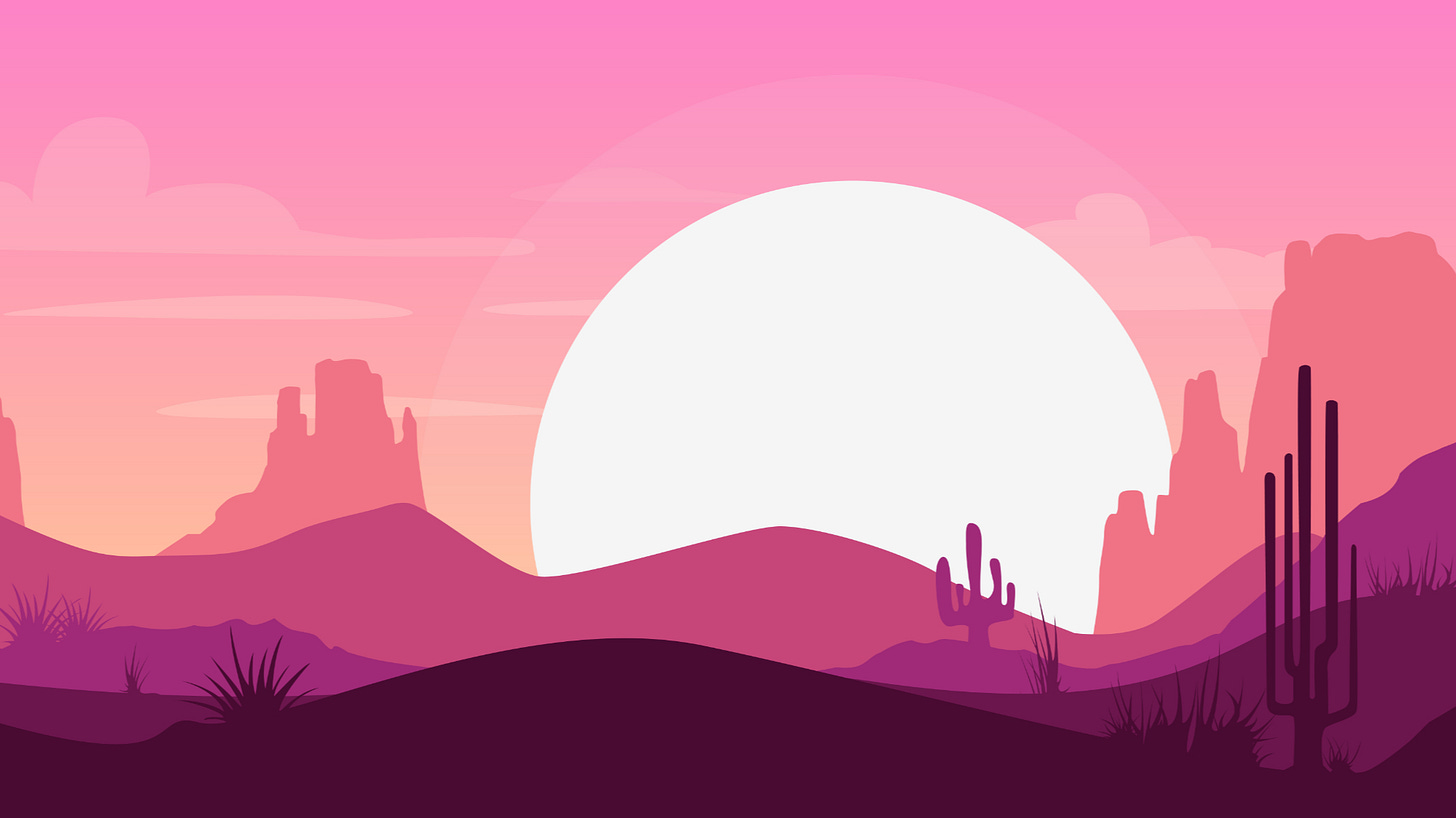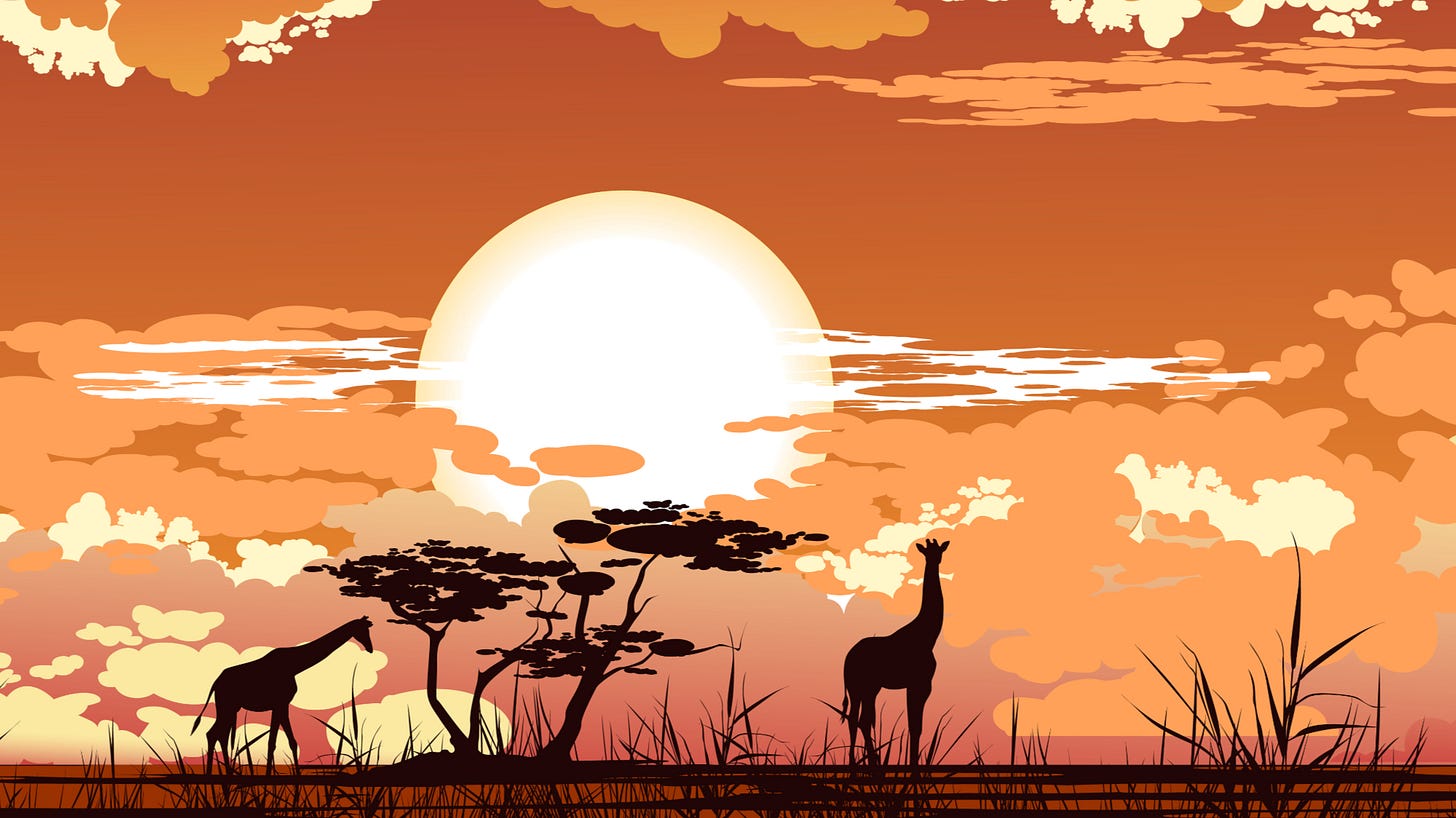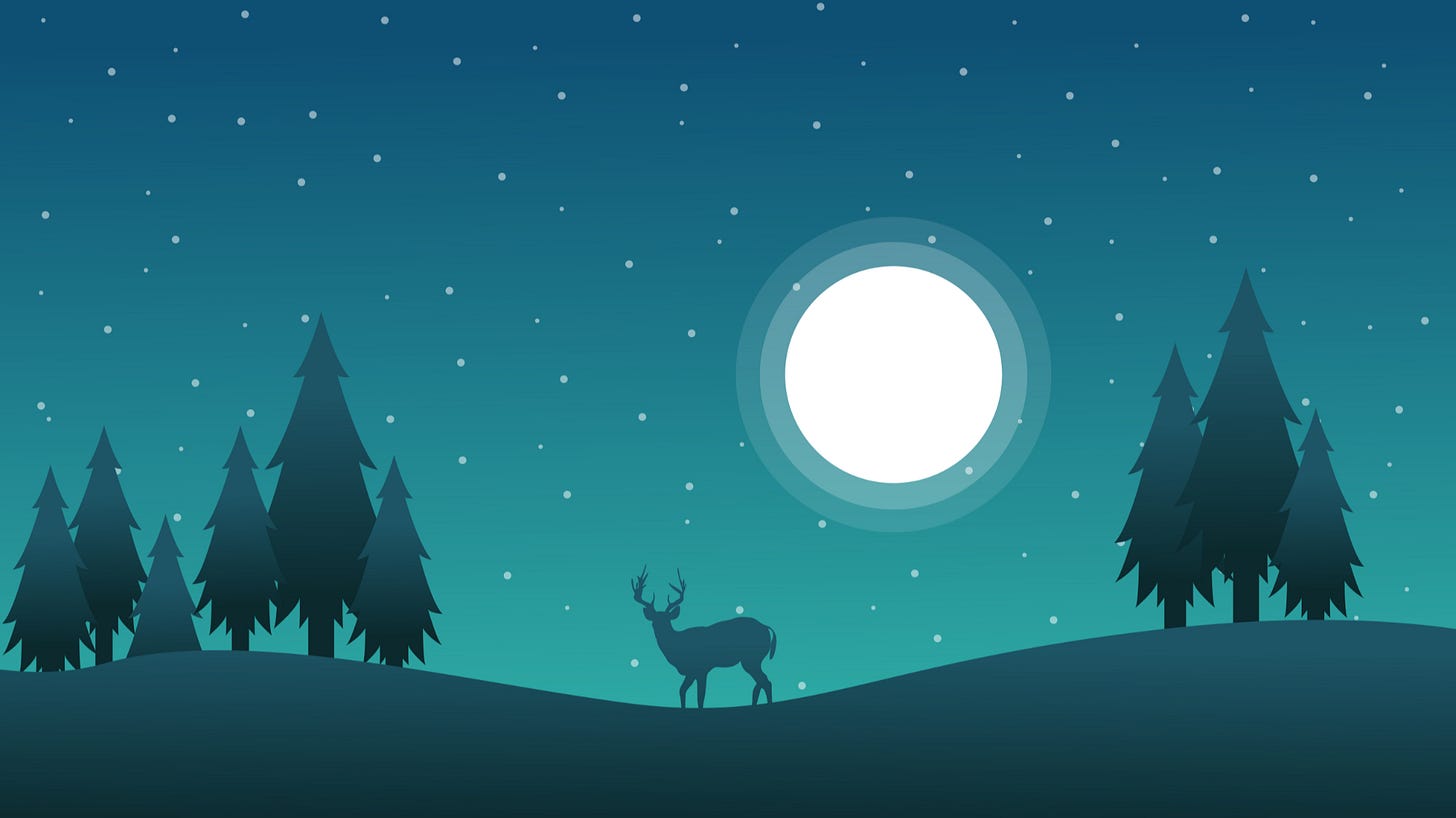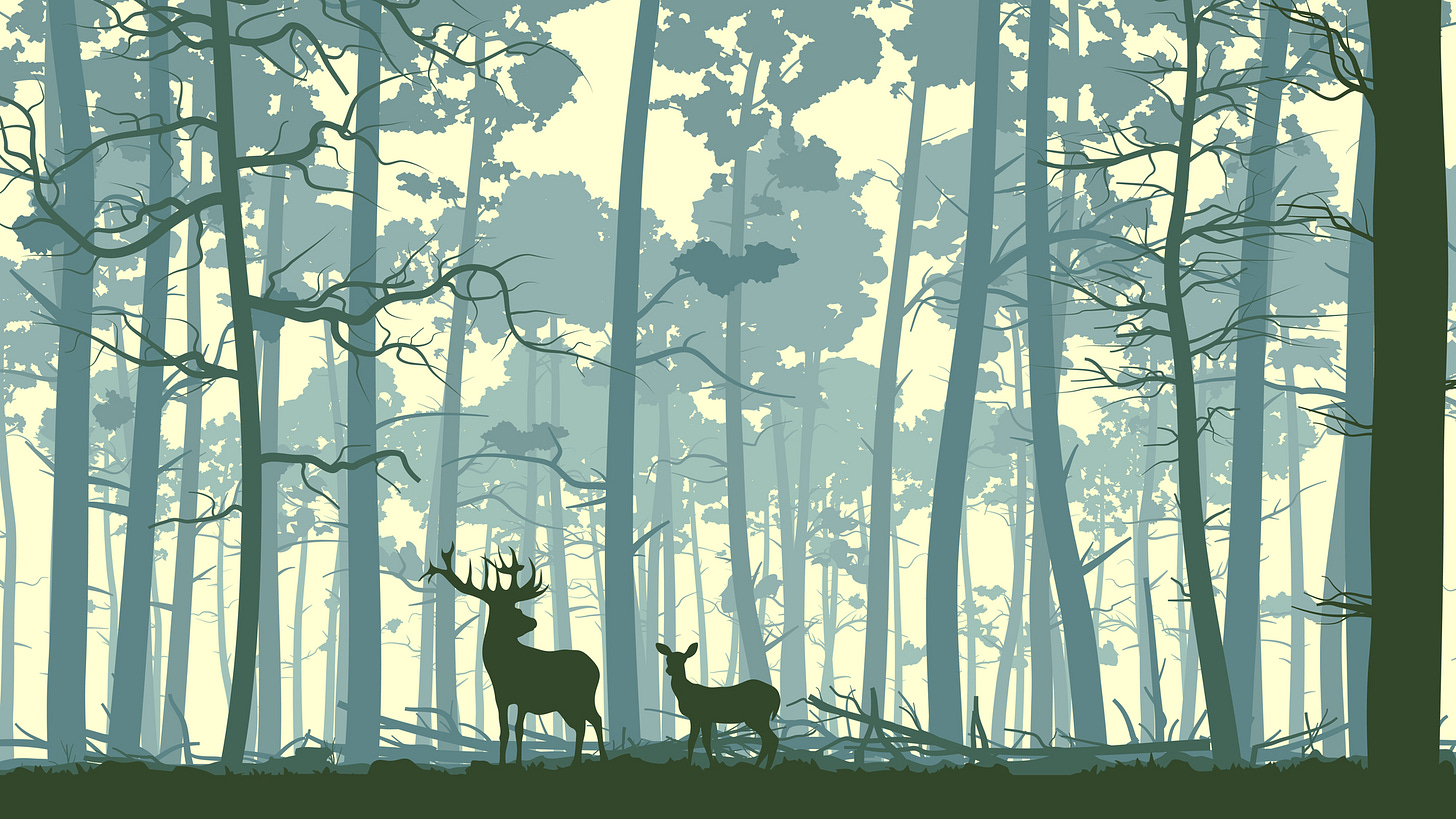The Author Ecosystems didn’t come out of a passion project or a sudden bolt of creative lightning. It came out of confusion, frustration, and a weirdly persistent problem that refused to go away.
Monica Leonelle and I had spent years working with authors by that point. Between us, we’d helped thousands of writers launch books, build audiences, grow mailing lists, run campaigns, and scale creative businesses. We’d co-hosted masterminds, launched group coaching programs, and walked authors through the entire path from zero audience to six-figure success.
We thought we knew what we were doing.
In fact, we were pretty dang confident in our system, especially after the success of our first flagship program, The Kickstarter Accelerator. We helped more than 125 campaigns raise over $1.2 million in our first year. Some authors doubled their income. Others quadrupled it. There were people who launched books that would’ve sat on their hard drives forever if not for the structure we helped them create.
And yet, for every big win, we saw something strange: a baffling number of authors didn’t make it to launch at all. Some had amazing books. Others had big platforms. But even with all the tools, templates, checklists, and coaching—we were only seeing about 20% of our students meet or exceed expectations. About 20% underperformed. And a staggering 50%? They never even hit publish.
That made no sense to us.
We’d built what we thought was a bulletproof process. The authors who implemented it succeeded. The system worked. So why were so many people still stuck?
We couldn’t figure it out.
We looked at the data. We compared case studies. We tracked what platforms people were using. Some authors crushed it on Kickstarter but flailed on Amazon. Others had tiny email lists but absolutely dominated their launches. Meanwhile, there were writers with huge followings and beautiful books who couldn’t move a single unit.
It was maddening. We kept circling the same questions:
· Why are some people doing everything "right" and still failing?
· Why are others breaking the rules and succeeding anyway?
Eventually, we had to face the truth: the answer wasn’t in the tactics. It was in the people.
The breakthrough came when we stopped thinking of marketing as a set of tasks and started looking at it as a pattern of behaviors. We realized that the most successful authors weren’t following a single, universal path. They were leaning into their own natural marketing instincts.
Monica and I were the perfect example. She thrived on consistency, systems, and audience-building over time. I lived for momentum, launch cycles, and creative sprints. When we stopped trying to force each other into a single marketing style, our collaboration got way smoother—and way more profitable.
So we started mapping out the tendencies we saw across our students, our peers, and ourselves.
We saw clear, repeatable patterns.
Some people were driven by trends and high-volume output. Others were methodical builders. Some needed the intensity of a launch deadline to stay focused. Some built slow-burning communities. Others thought in systems and brands and immersive worlds.
Eventually, we mapped these tendencies onto the five major ecosystems found on Earth:
Desert. Grassland. Tundra. Forest. Aquatic.
It wasn’t just metaphorical. It worked.
Every ecosystem had strengths, weaknesses, natural pacing, and ideal platforms. Suddenly, things that never made sense before started clicking into place. The people failing on Kickstarter? They were Forests trying to market like Tundras. The authors with tiny lists but giant launches? Aquatics who’d built loyal superfans across fragmented platforms. The ones who couldn’t finish a book? Tundras stuck without a launch to aim for. Deserts trying to act like Grasslands. Grasslands trying to act like Deserts.
We saw it everywhere.
The publishing industry has long been dominated by authors who write fast, ride trends, and optimize for volume and profit. That model works. It works really well, especially in places like Kindle Unlimited and ghostwriting, but it’s not the only way to succeed and it’s not the right fit for most creatives.
Right now, we’re watching a shift in the landscape. Platforms like Substack, Kickstarter, and Beventi, are blowing open the doors for other types of creators to thrive on their own terms.
What used to be a one-size-fits-all game is now a multiverse.
We don’t need you to be someone you’re not. We just need you to understand how you work—and to build a system around that.
We highly recommend you watch this video which will bring you up to speed on everything we have learned so far.
Below you will find a brief synopsis of each ecosystem.
The Five Ecosystems
The Author Ecosystems will help you identify your natural tendencies, avoid the burnout traps that come from misalignment, and make decisions that support your unique author career. You’ll learn what platforms fit your strengths, what marketing styles feel effortless instead of exhausting, and how to scale your business without sacrificing your sanity.
We also walk you through the healthiest and unhealthiest habits of each type, how to work with collaborators across ecosystems (trust me, this is huge), and how to filter the mountain of writing advice out there through a lens that works for you.
We’ve pulled this framework across everything—from craft to sales funnels, Kickstarter to email marketing, convention sales to community building—and we keep refining it as the industry evolves.
At the core of it all is this:
You don’t have to do it all. You just have to do what works for your ecosystem.
If you’re tired of banging your head against strategies that feel like they work for everyone but you… you’re in the right place.
This book isn’t a rulebook. It’s a map. One that helps you finally make sense of where you are, how you operate, and where you’re meant to go next.
Let’s get into it.
The Desert
Fast. Focused. Ruthlessly Efficient.
Let’s start with the ecosystem that’s historically dominated the publishing landscape.
Deserts are survivors. Tactical, lean, highly adaptable. They thrive in resource-scarce environments by doing more with less. Their superpower is efficiency. Deserts look at an opportunity and ask, “How can I win today?” They don’t need it to be sexy. They just need it to work.
In many ways, the Desert archetype became the industry default, especially with the rise of Kindle Unlimited, rapid release publishing, and ghostwriting. For a long time, it seemed like the only “real” way to succeed as an indie author was to pump out genre fiction on a rigid schedule, write to market, and feed the algorithm gods.
And it can work. Some of the most profitable authors we know are Deserts. They’ve built systems, dialed in their tropes, and scaled their catalogs into revenue machines.
But not everyone is built to be a Desert. If you’re not a Desert and you try to force yourself into that model? You’re going to break.
This ecosystem isn’t about artistic depth or slow-burn community-building. It’s about execution. About velocity. About being faster, leaner, and more data-driven than the competition.
Deserts aren’t here to feel all the feelings. They’re here to deliver product. Full stop.
Traits of a Desert
Speed-focused: Deserts move fast. They don’t need a perfect book. They need a book that ships.
Trend-aware: They spot market gaps, hit rising genres, and drop content when the timing is right.
Tactically driven: Everything is part of a system including writing, launching, advertising, scaling. It’s all part of the engine.
Minimalist marketers: Deserts don’t spend months building community. They build a funnel, test the ads, and optimize for ROI.
Emotionally detached: They don’t romanticize the work. They produce. If the market doesn’t respond, they move on.
What Success Looks Like for Deserts
A healthy Desert has systems for everything: outlining, drafting, editing, cover design, blurb writing, publishing, promotion. They know their tropes, their readers, their competitors. Their work is dialed in to hit genre expectations on purpose. They track data, tweak quickly, and test ruthlessly.
Their marketing is lean. Think low-cost reader magnets, Facebook ads, newsletter swaps, backlist optimization. They’re masters of sales funnels and “90-day cliffs”.
When everything is working, Deserts generate steady cash flow. They may not have a huge audience, but the audience they do have is highly targeted. They’re not building community, they’re building income.
Where Deserts Struggle
Burnout is the big one. Deserts can run hot, especially when chasing trends or trying to match the pace of others in their niche. Because they’re constantly producing and rarely pausing to refill the creative well, they risk hitting a wall and wondering, “Why do I even like this anymore?”
There’s also the risk of commodification. When you’re producing fast and marketing to data, it’s easy to lose touch with why you started writing in the first place. That’s when creative stagnation sets in—and suddenly the money machine starts sputtering.
Plus, not every Desert author is ready to scale. A lot of new writers try to become Deserts without the infrastructure. They don’t have processes, editors, ad budgets, or audience insight. They crash hard trying to keep up with publishing models built by people five years and twenty books ahead of them.
Best Platforms and Strategies for Deserts
Deserts thrive on systems where speed and scale are rewarded. That includes:
Kindle Unlimited (KU): Short-term sales windows, rapid release, and voracious genre readers? Check.
Amazon Ads and Facebook Ads: Great for pushing books in a tested series.
BookFunnel and StoryOrigin: For building lead magnets and list swaps at scale (not for community building).
Serialized platforms: If you can produce consistently and meet deadlines.
Rapid-release series and pen names: Build it, launch it, rinse, repeat.
Deserts also work well in ghostwriting, content writing, and freelance fiction where deadlines matter more than personal voice.
The Desert model isn’t bad. It’s just not for everyone.
If you’re a Desert, lean into it. Build the machine. Find your rhythm. Automate everything you can. But remember: it’s okay to slow down once in a while. Even Deserts get rain occasionally.
If you’re not a Desert, stop trying to be one. There are other ways to win.
You don’t have to outpace everyone. You just have to build a system that works for you.
Are you a Desert? Read more about Desert here.
The Grassland
Slow. Strategic. Built to Last.
Grasslands don’t look flashy at first glance. They’re not swinging from launch to launch or chasing trends like Deserts. They’re not pouring their soul into serialized chapters or building immersive fandoms like Forests or Aquatics. And yet, when you look a little closer you’ll find that some of the most stable, sustainable, and quietly profitable author businesses out there are built by Grasslands.
These authors aren’t trying to win the short game. They’re planting roots.
Grasslands are thinkers, planners, builders. They don’t just write a book, they build a body of work. They write strategically, often obsessively, around one central idea, genre, theme, or worldview. Their power comes from depth, consistency, and a clear sense of their lane.
If Deserts win by shipping fast, Grasslands win by becoming undeniable over time. They’re the ones who create definitive guides, cornerstone series, and content ecosystems that compound year after year.
A healthy Grassland can spend ten years talking about the same topic from a thousand different angles and still feel energized by it. Their joy isn’t in the pivot; it’s in the iteration.
Traits of a Grassland
Evergreen-minded: Grasslands love content that holds value over time. They’re in it for the long haul.
Focused on mastery: Rather than hopping between genres, they go deep into one niche until they become a known expert or voice.
Consistency-driven: They prefer sustainable habits to sprints. Give them a solid routine, and they’ll thrive.
Big-picture thinkers: Grasslands often have a larger mission, brand, or thesis behind their work.
Reluctant to launch: They sometimes struggle with perfectionism and “not ready yet” syndrome.
Grasslands often overlap with nonfiction authors, long-form content creators, and serial educators. If you’ve ever said, “I just want to help people understand this one thing,” you might be a Grassland.
What Success Looks Like for Grasslands
At their best, Grasslands are slow-burning powerhouses. They create high-value content and show up consistently over time. Their launches aren’t always flashy, but they’re reliable. Their sales may not spike, but they compound.
Grasslands often build the kind of backlist that pays dividends for years. They’re great at SEO, discoverability, and repurposing content in new ways. Their social media may look quiet, but behind the scenes they’re building libraries, frameworks, and long-term assets.
They tend to do exceptionally well with:
Evergreen nonfiction
Practical how-to guides
Series with lots of book and a rich, deep lore.
Email marketing and Substack
Long-term planning and business infrastructure
They’re also great collaborators, because they understand how to bring value into systems that already exist.
Where Grasslands Struggle
The biggest Grassland trap? Over-preparing.
Grasslands have high standards. That’s a gift, but it also means they often delay launching. They keep refining, researching, revising. They start new content plans instead of finishing the current one. They want every blog post, newsletter, or book to be airtight, and that perfectionism can kill momentum.
Another challenge? Visibility. Grasslands are builders, not performers. They don’t usually love being the face of a brand. So, unless they build strategic partnerships or strong SEO pipelines, their work can go unnoticed, even when it’s excellent.
They also burn out when forced to operate at sprint speeds. If they try to run like a Tundra or Desert—rapid launching, fast publishing—they usually crash hard. Grasslands need time and space to thrive. If the ecosystem they’re in doesn’t give them that, they’ll wither.
Best Platforms and Strategies for Grasslands
Grasslands thrive in systems that reward depth, reliability, and cumulative value. That means:
Substack and Email Newsletters: Perfect for slowly building trust and showcasing expertise.
Courses & Workshops: Especially evergreen offers that can be reused and resold.
SEO Blogging: Grasslands can dominate long-tail keyword traffic.
Podcasting & YouTube: When planned strategically, these channels become legacy content.
Wide publishing: When paired with high-quality, genre-consistent backlists.
They often do better outside of fast-paced launch cultures like Kickstarter unless paired with a Tundra-style partner who can run point on urgency and momentum.
Grasslands build quietly. They grow in layers. But once their ecosystem is in place? It’s incredibly hard to uproot.
We see a lot of Grasslands who think they’re broken because they’re not launching fast enough or selling on emotion or growing their TikTok audience by dancing in cosplay.
You’re not broken. You’re just not a Forest or a Tundra or an Aquatic. You’re a builder. A teacher. A system-maker.
You don’t need to dominate the charts today. You just need to show up consistently enough that your body of work becomes too valuable to ignore.
That’s how Grasslands win.
Are you a Grassland? Read more about Grasslands here.
The Tundra
Explosive. Cyclical. Launch-Oriented.
Tundras aren’t here to write forever. They’re here to write for something. They don’t just create—they build toward. If there’s no deadline, no audience waiting, no ticking clock pushing them forward, they often freeze up, but give them a big launch, a hard date, and a shot to make noise? They light up like fireworks.
Tundras are the sprinters of the author world.
They don’t do well with never-ending content calendars or slow-drip marketing. They need a build-up. A release. A moment to explode. Their energy is cyclical, vacillating between intense and all-consuming during the push, followed by a necessary period of rest and recovery.
If you’ve ever crushed a Kickstarter and then ghosted your audience for three months? You might be a Tundra. If your productivity spikes the moment you set a public launch date, and completely dies when you’re “just working on the next thing”? Welcome to the ice fields.
Tundras don’t create for the sake of it. They create for impact.
Traits of a Tundra
Launch-driven: Deadlines, campaigns, and events are what get them moving.
Hype-loving: They enjoy the energy of anticipation—teasing a new project, revealing covers, running countdowns.
Focused creators: When they’re in a production sprint, they can be unstoppable.
Recovery-based: After a big push, they have to rest. Otherwise, they burn out (and so does your audience)
Emotionally invested: Their launches feel personal. Wins are euphoric. Losses can knock them out.
Tundras often show up as indie novelists, comic creators, crowdfunding experts, and launch-focused marketers. They’re not usually the ones emailing every Tuesday. But when they hit your inbox? It’s with a mission.
What Success Looks Like for Tundras
A healthy Tundra is a launch machine.
They plan their calendar around campaign cycles. They stack content and production schedules to align with big releases. They know how to build buzz, how to galvanize a list, and how to create momentum. Tundras excel in event-based marketing: Kickstarter, convention signings, limited-edition drops, box sets, timed bonuses.
They don’t need a massive audience, just a motivated one. Their strength isn’t in being everywhere, it’s in showing up exactly when it counts, with energy that’s contagious and stakes that feel real.
And when the launch is over? They disappear to the mountains (figuratively…usually) to recharge and gear up for the next one.
Tundras don’t win by being always-on. They win by knowing when to turn it on—and when to turn it off.
Where Tundras Struggle
Tundras are masters of momentum… but can be total messes without it.
They often struggle with consistency. If there’s no urgency, no countdown, no audience to perform for, they drift. They’ll second-guess their work, overthink every chapter, or jump to a new project just to get that dopamine hit of “starting fresh.”
Burnout is real, and it’s brutal. Their cycles are intense, so Tundras are prone to flaming out, especially if they try to go back-to-back-to-back without building in recovery time.
Another trap? The Launch Spiral.
This happens when a Tundra finishes a project and immediately feels the need to start hyping something else even if the last launch nearly killed them. They don’t know how to rest without guilt, so they overcommit and self-sabotage.
Unhealthy Tundras also risk tying their self-worth to launch outcomes. If a campaign flops or underperforms, it doesn’t just feel like a business failure, it feels personal, and that can cause deep creative paralysis.
Best Platforms and Strategies for Tundras
Tundras thrive where visibility spikes, deadlines matter, and launches have built-in urgency. Their best playgrounds include:
Kickstarter & Crowdfunding: The ultimate Tundra environment, fixed deadlines, public stakes, and community buzz.
Limited-time launches: Box sets, preorder campaigns, bundles with bonuses.
Convention Sales: High-energy, face-to-face selling with built-in adrenaline.
Email Marketing (bursts): Not daily newsletters, but strategic, time-based campaigns around launches.
Pre-order windows: Give them something to build hype around.
Tundras can also do well with seasonal schedules with 3–4 big pushes per year, spaced out with strategic downtime. They don’t need to be everywhere. They need to be where it matters, when it matters most.
Tundras are volcanic. Cold most of the time, until they erupt with creative fire.
If that’s you, embrace it. Don’t beat yourself up for not being consistent. Be cyclical on purpose. Plan your year around your bursts. Build rest into your schedule like it’s sacred.
You’re not lazy. You’re just hibernating until it’s launch season.
Don’t try to be “on” all the time. You’re not built for it. You’re not supposed to be. And when you try to be like a Desert or a Grassland, you’re only accelerating your burnout.
Launch hard. Recover harder. That’s the Tundra way.
Are you a Tundra? Read more about Tundra here.
The Forest
Rooted. Resonant. Community-Centered.
If you’re a Forest, your work isn’t just about the stories you tell, it’s about the connection you build with your audience through those stories. Forest authors don’t want to just sell books; they want to be seen, to make readers feel seen, and to create something that feels like home for the people who find them.
That’s the core of the Forest ecosystem: belonging.
These authors build careers on emotional resonance and authentic relationships. Their marketing isn’t about chasing trends or running data-driven funnels. It’s about trust. Identity. Vulnerability. When Forests are healthy, they build beautiful, tight-knit communities of superfans who buy every book, back every campaign, and recommend them endlessly, not because of a slick pitch, but because of the way the work feels.
Forests don’t need a massive audience. They just need the right one.
Traits of a Forest
Brand-first thinkers: Forests are often their brand. Their voice, aesthetic, and story all reflect who they are.
Emotionally tuned in: They write from the heart and value deep emotional impact over high-concept spectacle.
Community-driven: Forests thrive on relationships, both online and in person. They want conversation, not broadcast.
Shared language: They build connection through giving people the shared language to communicate with each other.
Sensitive to rejection: Forests take feedback (especially silence) personally—sometimes painfully so.
If you’ve ever said, “I just want to write things that matter to people,” or “I want to create something that makes readers feel seen,” you’re probably a Forest (or at least embracing your inner Forest).
What Success Looks Like for Forests
When Forests are thriving, they build ecosystems that feel alive. Their readers follow them from genre to genre. Their newsletters feel like letters from a friend. Their social media is warm, engaging, and unmistakably them.
They might not publish ten books a year or spend thousands on ads, but when they do put something out into the world, it sells—because people trust them. People care about them. People want to support them.
A Forest might do three releases a year. Or one. But they build loyalty that can last a lifetime.
Forests tend to do well with:
Serialized fiction on Ream, Patreon, or Vella
Crowdfunded book boxes or special editions
Personal blogs or Substacks with strong author voice
Convention appearances and live events
Reader communities on Discord, Facebook, or Slack
They’re also more likely to get fan art, emotional DMs, and unsolicited long emails thanking them for helping someone through a hard time.
Where Forests Struggle
The downside of being a Forest? Emotional exhaustion.
Forests are deeply tied to their work. When things go well, they soar. But when a launch underperforms, when social media is quiet, when nobody replies to the newsletter they spent hours writing, they spiral.
Because Forests blur the line between personal and professional, every “no” feels like a rejection of them. That’s dangerous. It can lead to long dry spells, imposter syndrome, and burnout.
They also have a hard time setting boundaries. They want to help everyone. They feel guilty charging money. They say yes too often, and they don’t want to turn anyone off, even if they want to hear from them. So they avoid it. Or they force it and feel fake.
If Forests don’t learn to protect their energy and filter feedback wisely, they’ll eventually shut down altogether.
Best Platforms and Strategies for Forests
Forests do best where authenticity, story, and relationship-building are rewarded. That includes:
Patreon or Ream: Monthly support from your most loyal fans in exchange for early access, bonus content, or behind-the-scenes insight.
Email newsletters with voice: Not templated, automated drip sequences. Real emails. Stories. Invitations to connect.
Substack: Especially powerful when paired with personal essays or serialized work.
Live events & reader groups: Forests thrive in real-time connection, whether at a booth or in a comment thread.
Social platforms with high engagement: Like Instagram stories, TikTok, or even YouTube when used for “day-in-the-life” content.
Forests don’t need to be viral. They just need to be consistent. Show up. Be real. Let people in. That’s your superpower.
You don’t have to out-market anyone. You don’t need to trick readers with scarcity or shout louder than everyone else. You just need to connect.
You already know how to do that. You’ve probably been doing it for years without realizing it.
The key is to build your author business in a way that feels good and sustains you. That means setting boundaries. Saying no. Charging fairly. And remembering that silence is not always rejection. It’s just the internet being the internet.
You’re not here to be famous. You’re here to be felt. Lean into that.
Are you a Forest? Read more about Forests here.
The Aquatic
Expansive. Immersive. Multi-Platform Thinkers.
Aquatics don’t just write books. They build worlds.
They’re not looking to drop a one-off novel or even just a series. They want to create an experience. One that spans across formats, platforms, and mediums. Books become games. Characters become merchandise. Stories become lore-rich universes. And their audience? It’s not just “readers”, it’s a fandom.
Aquatics are natural brand-builders. They think in terms of systems, ecosystems, multimedia extensions, and long-term intellectual property (IP) play. If they had unlimited resources, they’d turn their stories into full-blown franchises spanning books, board games, podcasts, music, art, animated shows, fan clubs, conventions, live readings, and who knows what else.
They are visionaries, but that vision comes with a cost.
Aquatics can see everything, but they struggle to focus on one thing at a time. Their creativity is sprawling. Their ideas multiply like sea foam. And unless they build the right infrastructure, they risk getting lost in their own oceans.
Still, when healthy, Aquatics can build publishing careers that stretch far beyond the bookshelf. They're not just authors, they're empires in motion.
Traits of an Aquatic
Brand-centric: Aquatics see themselves as creators of a universe, not just writers of books.
Multi-format minded: They think in multimedia—comics, cards, courses, podcasts, merchandise, and beyond.
Systemic planners: They love frameworks, lore bibles, interlocking arcs, and big-picture strategies.
Collaboration driven: In order to build their universe, they are constantly collaborating with other brand who can introduce them to new audience and validate their ideas.
Easily overwhelmed: With so many ideas, execution becomes the bottleneck.
If you’ve ever said, “This isn’t just a book—it’s a world people can live in,” or “I have ten projects in progress and can’t pick which one to finish,” you’re probably an Aquatic.
What Success Looks Like for Aquatics
When they’re in sync, Aquatics are unstoppable.
They build rich, multidimensional brands that capture attention across different channels. They might serialize part of their story on Substack, run a companion podcast, offer exclusive merch to subscribers, and crowdfund special editions or game expansions.
They do well with:
Collaborations with other brands that can validate their work to new fans.
Cross-media campaigns (book + comic + soundtrack + more)
Immersive Kickstarter campaigns with layered reward tiers
Subscriptions with fan club tiers (Patreon, Ream, etc.)
Personal websites with stores, lore databases, and unique reader experiences
Aquatics can draw superfans who don’t just read their books, they inhabit their worlds. When everything is aligned, these authors create ecosystems so magnetic that readers return again and again just to stay connected.
Aquatics thrive when they feel free to explore and expand—as long as they have structure to keep them grounded.
Where Aquatics Struggle
The danger of being an Aquatic? Overextension.
Aquatics often chase every idea that floats by. They start fifteen projects at once, try to be on ten platforms simultaneously, and constantly reinvent their strategy mid-launch. They say yes to too much. They burn through their budget, time, and energy trying to “do it all.”
Because they have such a big vision, they often struggle with clarity. They confuse their audience (and themselves) with mixed messaging. They try to launch too many things at once. They delay projects because they’re “not perfect yet.” Their to-do list is infinite, and their follow-through can fall apart.
Another challenge? Team-building. Aquatics often need collaborators to execute on their vision—but resist giving up control. That leads to bottlenecks, burnout, and disappointment.
An unhealthy Aquatic can spin for years in the sea of ideas, drifting from project to project without ever finishing the boat that would take them to shore.
Best Platforms and Strategies for Aquatics
Aquatics do best when they build a universe and invite people into it. That includes:
Kickstarter and crowdfunding: Perfect for big, bold campaigns with physical rewards, stretch goals, and immersive experience design.
Direct sales (via Shopify, Payhip, WooCommerce): They can create full product lines, bundles, special editions, and upsells.
Substack or Patreon: For serialized work, behind-the-scenes content, and layered community access.
Email lists (with segmenting): Aquatics often have multiple entry points into their brand, so custom funnels are powerful.
World-building websites: With lore, timelines, maps, wikis, and interactive components.
The trick is: Aquatics must prioritize and sequence. Everything is possible—but not all at once. The ecosystem only thrives when the water is clear.
You’re not broken for thinking big. The industry needs your vision. The readers want your worlds. But you have to finish something.
Don’t try to launch three Kickstarters and a podcast in the same month. Don’t over-promise and under-deliver. Don’t try to act like a Desert or a Tundra just because you feel behind.
You are an architect of imagination. You build entire realities. That’s your gift. Just make sure you’re building a bridge, not a maze.
And most of all? Find your rhythm. Get help. Ship something. Then grow from there.
You don’t have to go viral. You just have to go deep—and bring your people with you.
Are you an Aquatic? Read more about Aquatics here.
Embrace Your Wild
Now you’ve seen the terrain. You’ve walked through deserts, hiked grasslands, weathered tundras, explored forests, and swum through deep waters. Maybe you saw yourself in one ecosystem. Maybe in two. Maybe you felt called out by all five.
That’s okay. If you felt called by more than one, perhaps you are one of our blended ecosystems.
Blended Ecosystems for Writers
In nature, ecosystems often blend at their edges, creating rich environments where two biomes coexist. For authors, these blended ecosystems represent a mix of creative tendencies and strategies that combine the strengths of two archetypes. However, blending ecosystems also brings challenges—writers must learn to harness both sides without becoming over…
This isn’t about boxing yourself in. It’s about recognizing your natural patterns so you can finally stop fighting yourself. Most of us spend years trying to market like someone we admire, only to burn out, stall out, or collapse under the weight of something that was never built for us in the first place.
You’re not lazy. You’re not broken. You’re not failing because you suck at business. You’re just using a map that wasn’t drawn for your terrain.
The Author Ecosystems model exists to help you draw your map.
It gives you permission to stop trying to be a Desert if you’re actually a Forest. To stop apologizing for your Grassland pacing. To lean fully into your Tundra sprints or Aquatic vision. To finally understand why that launch worked—or didn’t. Why that platform felt natural—or made your skin crawl.
You don’t need to do everything. You need to do the things that work for you.
And when you do? You’ll notice something incredible start to happen:
Your energy returns.
Your launches get easier.
Your writing feels joyful again.
Your audience begins to grow—not because you’re hustling harder, but because you’re showing up honestly.
This isn’t a straight line. Ecosystems evolve. You’ll grow. You’ll blend. You’ll borrow tactics across types. That’s normal. Many authors live on the edge between two ecosystems. Some evolve into another entirely as their careers expand.
The key is to recognize your core tendencies and build from there. If you try to scale your business from someone else’s strengths, you’ll collapse every time. But if you build on your own ecosystem—one rooted in your values, your pace, your skills—you’ll grow something that lasts.
And it’ll actually feel good.
You just needed permission to believe it could work, but if you want it anyway, then this is your permission.
Build your stack. Trust your pace. Embrace your weird.
You’re not lost. You just needed a better map.
Let’s go build something beautiful.









It’s impressive to come up with a way of sorting people that has this much freshness. Fascinating and very practical!
This was so fascinating, and I either read or listened to all the articles and interviews. And only made an account to write a question that has been biting me for the last several months since learning of this system. I still can't tell whether I am Forest or Aquatic. It's mostly because of the various formats of the Aquatic and the interconnectivity of the Forest contrasted against the trends and tropes of the Forest, which tends to be more coincidental rather than intentionally twisting, and the mild passion in the practical artistry, since i do like doing the various pieces themselves.